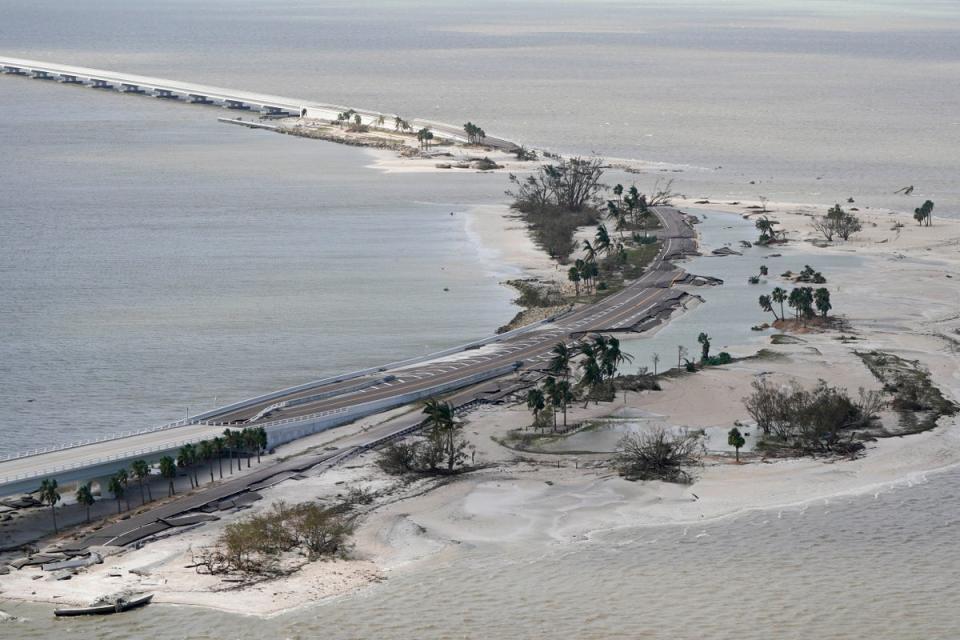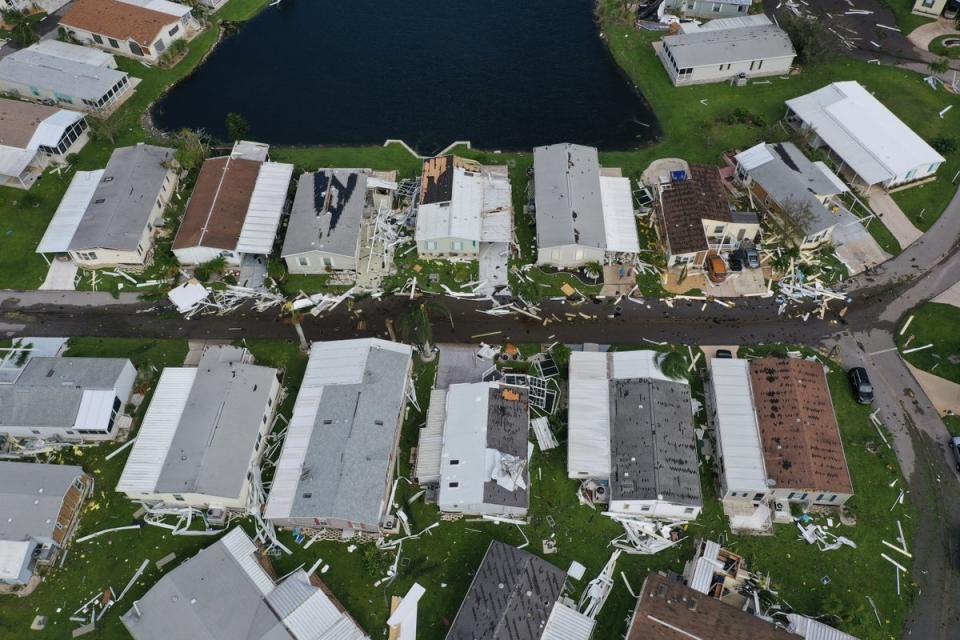Aerial photos capture Hurricane Ian devastation on Florida coast
Florida has been left reeling after Hurricane Ian plowed a ruinous path across the state and more destruction is likely with the enormous storm expected to regain strength in the coming hours.
The hurricane crashed into the southwest coast close to Fort Myers on Wednesday afternoon, just shy of rare Category 5 status. Wind speeds reached 155mph amid reports of storm surge inundation of 8ft to 10ft (2.4m to 3m) above ground level.
The number of fatalities and magnitude of the destruction in the Sunshine State was still emerging on Thursday but the initial picture was nothing less than catastrophic.


“We’ve never seen storm surge of this magnitude,” Florida governor Ron DeSantis said. “The amount of water that’s been rising, and will likely continue to rise today even as the storm is passing, is basically a 500-year flooding event.”
More than 2.6 million people were left without power in Florida and the damages were estimated in the multi-billions of dollars.
Aerial footage showed neighborhood after neighborhood of complete decimation where homes had been inundated with several feet of water and some swept clean from their foundations. Large boats and yachts were left upended on sidewalks and all manner of heavy debris strewn across the landscape.
Many people were trapped in their homes after high waters made streets impassable. A portion of the Sanibel Causeway collapsed, cutting off a couple of barrier islands from the mainland entirely.

Search and rescue operations began in full force on Thursday with fire crews going door-to-door in boats and the US Coastguard airlifting dozens of people from roofs.
But even first responders did not escape its impact. In Naples, one fire station was flooded and several engines ruined. HCA Florida Fawcett Hospital in Port Charlotte had the roof ripped off its ICU unit and the Emergency Room flooded.
Ian weakened to a tropical storm on Thursday as it moved inland but forecasters warned Floridians not to let their guard down with more severe flooding expected from heavy downpours.
The National Hurricane Center reported that Ian is forecast to produce “life-threatening” flooding, storm surge and strong winds across more of Florida, Georgia and the Carolinas as it moves north.
The tropical system is expected to regain strength over the Atlantic Ocean on Thursday morning before it strikes South Carolina as a Category 1 hurricane.
President Joe Biden declared a major disaster in Florida for nine counties allowing additional funding to flow to the state to help with relief and recovery efforts.

“This could be the deadliest hurricane in Florida history,” the president said during a briefing at the Federal Emergency Management Agency (FEMA) headquarters.
FEMA’s Deanne Criswell said the agency is readying itself for potentially thousands of people to be displaced in the long term with countless properties rendered uninhabitable by the high waters.
While no stranger to hurricanes, Florida is one of the US states most at risk from flooding linked to the climate crisis in the coming decades, the nonprofit First Street Foundation reports.
Rapid analysis, published by researchers at Stony Brook University and Lawrence Berkeley National Laboratory on Thursday, shows that human-induced climate change increased Ian’s extreme rain rates by more than 10 per cent, the nonprofit Climate Signals said in an email.
The climate crisis does not necessarily mean more hurricanes in the future – but planet-heating greenhouse gas emissions, largely from burning fossil fuels, are driving hotter air and ocean temperatures that supercharge storms, making them more powerful and wetter.


 Yahoo News
Yahoo News 
